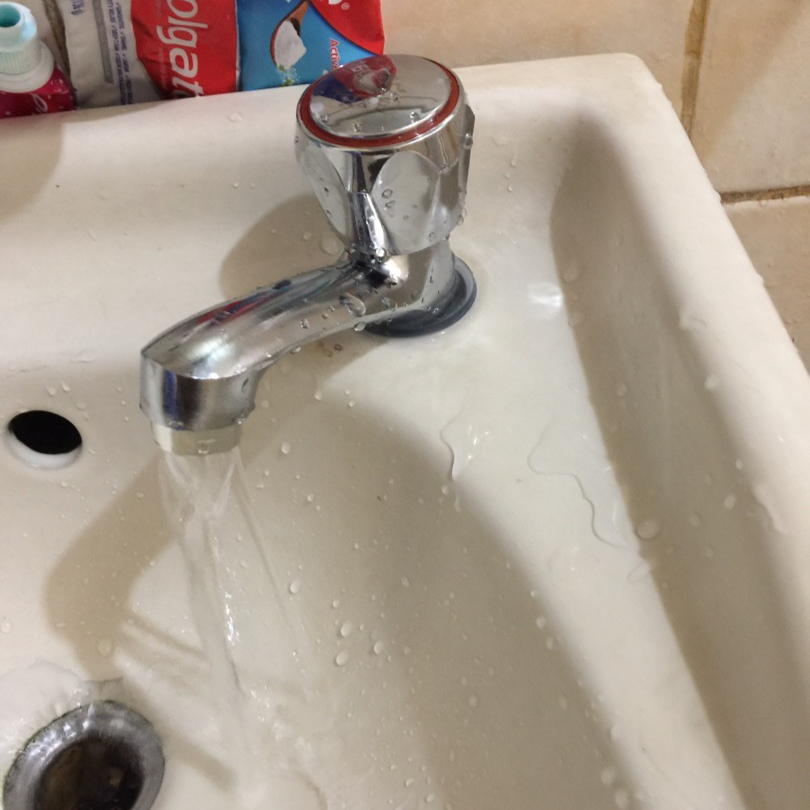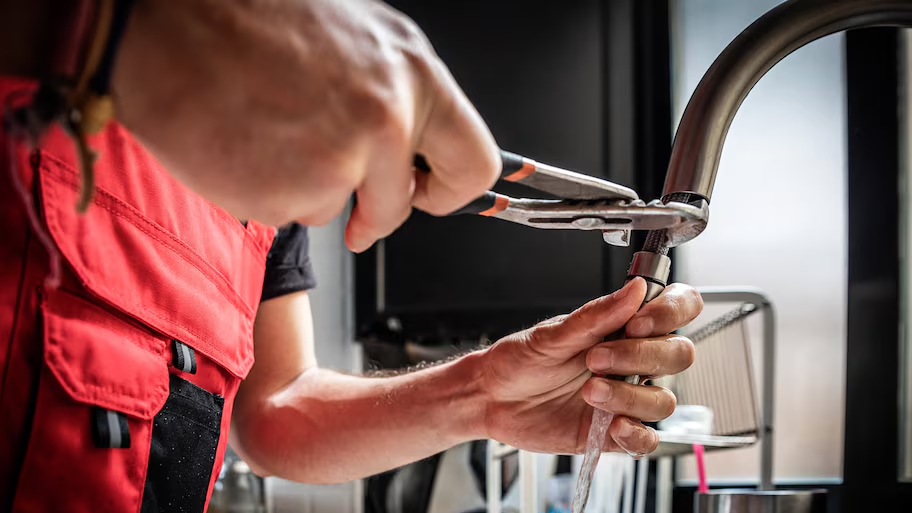Understanding the Significance of Dealing with a Faulty Faucet
Understanding the Significance of Dealing with a Faulty Faucet
Blog Article
Were you on the lookout for facts and techniques involving Why Is It Important To Fix Your Leaking Tap/Faucet??

Leaking faucets could feel like a minor trouble, but their impact surpasses simply the inconvenience of the noise. From drainage to sustaining unnecessary economic expenses and wellness risks, ignoring a trickling tap can result in numerous consequences. In this post, we'll delve into why it's essential to resolve this usual family problem quickly and properly.
Waste of Water
Environmental Influence
Leaking taps add considerably to water wastefulness. According to the Environmental Protection Agency (EPA), a solitary faucet trickling at one drip per secondly can throw away greater than 3,000 gallons of water each year. This not just stress water sources however also impacts environments and wild animals depending on them.
Financial Expenses
Boosted Water Bills
Beyond the ecological influence, trickling faucets can inflate water costs considerably. The built up waste gradually translates into higher utility expenses, which could have been prevented with timely repair services.
Potential Building Damages
Additionally, extended trickling can cause damage to components and surface areas surrounding the tap. Water accumulation can create discoloration, corrosion, and even structural issues if left unattended, resulting in additional repair work prices.
Wellness Worries
Mold and Mold Development
The constant presence of dampness from a trickling faucet produces an ideal environment for mold and mildew development. These fungi not just jeopardize interior air top quality but also present health and wellness risks, specifically for people with breathing conditions or allergies.
Waterborne Diseases
Stagnant water in trickling taps can come to be a breeding ground for bacteria and other pathogens, enhancing the risk of waterborne illness. Impurities such as Legionella germs grow in stagnant water, possibly causing serious health problems when ingested or breathed in.
Do it yourself vs. Professional Repair
Benefits and drawbacks of DIY Fixing
While some may attempt to take care of a leaking tap themselves, DIY fixings come with their very own collection of challenges. Without appropriate expertise and tools, do it yourself efforts can worsen the concern or lead to incomplete repair work, lengthening the trouble.
Benefits of Employing an Expert Plumber
Employing a professional plumber guarantees that the underlying source of the trickling tap is addressed efficiently. Plumbers have the proficiency and devices to identify and repair tap problems successfully, saving time and decreasing the threat of more damages.
Step-by-Step Guide to Fixing a Dripping Faucet
Devices Called for
Before trying to take care of a dripping faucet, gather the essential tools, consisting of a flexible wrench, screwdrivers, replacement components (such as washers or cartridges), and plumber's tape.
Common Faucet Issues and Their Solutions
Recognize the sort of faucet and the certain concern causing the drip. Typical issues consist of worn-out washers, corroded valve seats, or damaged O-rings. Refer to supplier guidelines or on-line tutorials for detailed advice on fixings.
Safety nets
Normal Maintenance Tips
To avoid dripping taps, do regular upkeep such as cleaning up aerators, checking for leaks, and replacing worn-out parts promptly. Additionally, consider installing water-saving tools or updating to more efficient components.
Significance of Prompt Repairs
Addressing trickling faucets as soon as they're noticed avoids further water wastefulness and possible damage, ultimately saving both water and money in the future.
Influence On Residential Property Worth
Assumption of Well-Maintained Building
Preserving a residential property in good condition, including dealing with upkeep concerns like trickling taps, boosts its viewed worth and desirability amongst prospective purchasers or tenants.
Impact on Resale Value
Properties with well-maintained plumbing fixtures, including faucets, command greater resale values in the property market. Addressing leaking taps can contribute to a positive impression throughout building inspections and settlements.
Environmental Duty
Private Payment to Conservation
Taking duty for taking care of leaking faucets lines up with wider initiatives toward water conservation and environmental sustainability. Every person's activities jointly make a substantial effect on preserving valuable sources.
Lasting Living Practices
By prioritizing timely repair services and adopting water-saving behaviors, people add to lasting living methods that benefit both existing and future generations.
Conclusion
Dealing with a leaking faucet exceeds plain convenience; it's a crucial step toward preserving water, lowering financial prices, and guarding health and residential property. Whether via DIY fixings or professional assistance, acting to repair dripping taps is a small yet impactful method to promote accountable stewardship of sources and contribute to a much healthier, much more lasting future.
How to Fix a Dripping or Leaky Faucet
A leaking faucet is one of the most common problems that homeowners encounter, but it being commonplace doesn’t make it any less annoying. The constant drip drip drip of a leaking bathtub faucet, showerhead, or sink tap can disturb your home’s serenity. Left neglected, a dripping faucet can also result in higher water bills and discoloration or mold growth in your sink or plumbing fixtures.
Fortunately, you don’t have to be a trained plumber to know how to stop a dripping faucet. With some basic tools, replacement parts, and a little patience, leaky faucet repair is a breeze. In this article, we’ll explain what causes dripping faucets and how you can fix them.
What Causes a Leaking Faucet?
Kitchen and bathroom faucets come in all manner of designs, but most involve some combination of valves, O-rings, seals, and washers. The O-ring is usually the weakest link, but any one of these pieces can wear down over time. Heat, moisture, temperature fluctuations, minerals, mold, and movement can contribute to warping and corrosion, breaking the watertight seal. This just comes with the territory of being a homeowner. Everything is always subject to wear and tear, and some component parts of your appliances and fixtures need to be replaced on occasion. At least replacement O-rings are cheap!
More rarely, dripping faucets can be a symptom of excessively high water pressure. Were this the case in your home, you would probably notice that the leak is not isolated to one faucet. Water pressure issues are harder to resolve on your own. We recommend contacting a professional plumber if you suspect your water pressure is too high.
How to Fix a Dripping Faucet
Pipe wrench or monkey wrench Allen wrench set Screwdrivers Old towel or rag Shut off the water.
Before you do anything, you need to turn off the water to keep from drenching your kitchen or bathroom. You should find a valve under the sink and against the wall. Once you’ve turned this valve, try turning the faucet on to confirm that the water source has been cut off.
If you can’t locate your local valve for the faucet you’re working on, you can always shut off the water to the house at the main valve. Of course, this will prohibit anyone from using the sinks, showers, or toilets while you’re working on the faucet that’s giving you trouble.
Plug or block the drain.
You’ll be disassembling the faucet and removing some small bits of hardware. Plug the drain with a stopper or rag to avoid the possibility of a small screw falling into your P-trap.
Take apart the faucet assembly.
There are several varieties of kitchen and bathroom faucets, each with its own manner of assembly. For detailed instructions on how to disassemble your faucet, you can refer to the fixture’s manual or contact the manufacturer. If you know whether you have a ball, disc, cartridge, or compression faucet, you can find detailed schematics online.
In general, you need to begin by removing the faucet handles. You might notice a small screw that you’ll need to remove with a screwdriver or Allen wrench. If you don’t see any visible securing hardware, it’s likely hidden under a decorative cap that can be unscrewed or popped off with flathead screwdriver.
Remove each piece methodically, consulting a schematic when necessary. Take notes or arrange the pieces in such a way to make it easier to correctly reassemble the faucet later.
Remove the cartridge.
Once you’ve removed the handles and securing hardware, you should be able to remove the valve cartridge or stem. Some cartridges will slide right out. Other faucet models will require you to loosen a nut with a pipe wrench before you can remove the valve stem.
Examine the exposed hardware.
With the cartridge or stem removed, inspect the component parts. Check the rubber O-rings for wear and tear. Also examine the seat washer for corrosion or other damage. These pieces are usually the responsible parties for a dripping faucet, but it’s worth inspecting the other component parts while you have the faucet disassembled.
Find replacement parts.
Once you’ve identified which faucet component has failed, find an identical replacement. Your local hardware store should have O-rings, seat washers, and other standard components in stock. If you have a luxury or uncommon faucet, you may have to contact the manufacturer for a replacement part.
It’s a good idea to take your old parts with you to the hardware store so you can compare them with the store’s inventory and be sure you’re purchasing the correct replacement.
Reassemble the faucet.
With your new parts in hand, reconstruct the faucet and handles. Don’t be tempted to overtighten screws or nuts. You might think this could create a better seal, but it can instead damage or bend a delicate part of the assembly and create a new problem for you.
Turn on the water and test the faucet.
The only thing left to do is test your work. Unplug the sink, turn the water back on, and try the faucet. Congratulate yourself on a job well done!
https://www.libertyhomeguard.com/how-to-fix-a-dripping-or-leaky-faucet/

I hope you enjoyed our topic on How to Fix a Dripping or Leaky Faucet . Thanks for taking the time to read our article post. Are you aware of somebody who is interested by the topic? Why not promote it. Thank you so much for your time invested reading it.
Report this page